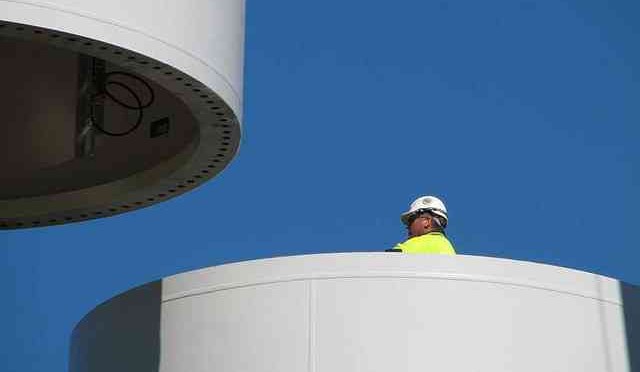The height at which a wind turbine is located is arguably the most important determinant of its performance and efficiency. This is where a wind tower acts as a crucial component. A wind tower is a tall structure, at the upper end of which the nacelle and the wind turbine are mounted. The length of the wind tower depends largely on the energy generation capacity of the turbine and the size of its blades. A wind tower with large blades that’s not high enough could cause the blades to come in contact with structures on the ground. Thus, to keep the long blades of the wind turbine clear of the ground and other objects, it is imperative to choose a wind tower with an optimal height.
While it is evident that the sturdiness of a wind tower is crucial, it is important for these components to also be low on maintenance and be able to endure continued exposure to the environment. The height of the wind tower has an impact on power generation – the higher the tower the greater wind speeds it exposes the turbine to. Moreover, taller wind towers also take the wind turbine beyond the turbulence zone.
Investments in wind towers are determined based on how heavy the nacelle and turbine are. The strength and stability of a wind tower, in turn, is directly influenced by the material it is made of, its gauge, and weight. The application is what primarily influences the design of a wind tower. Thus, wind towers for onshore applications are decidedly different from towers meant for offshore use.
Get free research PDF for more Professional and Technical insights:http://www.transparencymarketresearch.com/sample/sample.php?flag=B&rep_id=12527
Wind Tower Market: Trends and Drivers
While onshore wind farms have now become common in nearly every major country in the world, the boom in the offshore wind energy sector will be both a challenge and an opportunity for the global wind tower market. Offshore environments can be merciless and corrosive, making the right selection of materials and coatings for wind towers important. The installation technique used also becomes important in such a setting. However, there are also several benefits associated with offshore wind generation, which are helping fuel the demand for wind towers for offshore energy farms.
That renewable energy is the future is now a well-known fact. Wind and solar energy are expected to occupy a large share in the global energy mix, creating numerous opportunities for the growth of the wind tower market. However, the high maintenance and replacement costs of wind turbines could act as a restraint on the growth of the global wind tower market as well.
Backed with ample government support, the prospects of the global wind energy industry seem promising. And this factor will ensure the steady if not tremendous growth of the wind tower market.
Wind Tower Market: Segmentation
The types of towers that are available on the market include concrete, lattice, tubular steel, and hybrid towers. A wind tower could make up nearly 30% of the total cost of a wind turbine. Tubular steel towers are the standard in the industry currently but the use of hybrid towers is also rising with the development of lighter yet sturdier materials.
Likewise, by application type, the global wind tower market can be segmented into onshore and offshore. With land becoming a precious commodity, many wind farms are now moving offshore into the oceans. This will lead to a higher demand for offshore wind towers, enabling this segment to display a higher growth rate than the onshore wind towers segment.
The key companies operating in the global wind tower market include: Suzlon Energy Limited, ENERCON GmbH, CS Wind Corporation, GE, Siemens AG, and others.
Research Report:http://www.transparencymarketresearch.com/wind-tower-market.html


